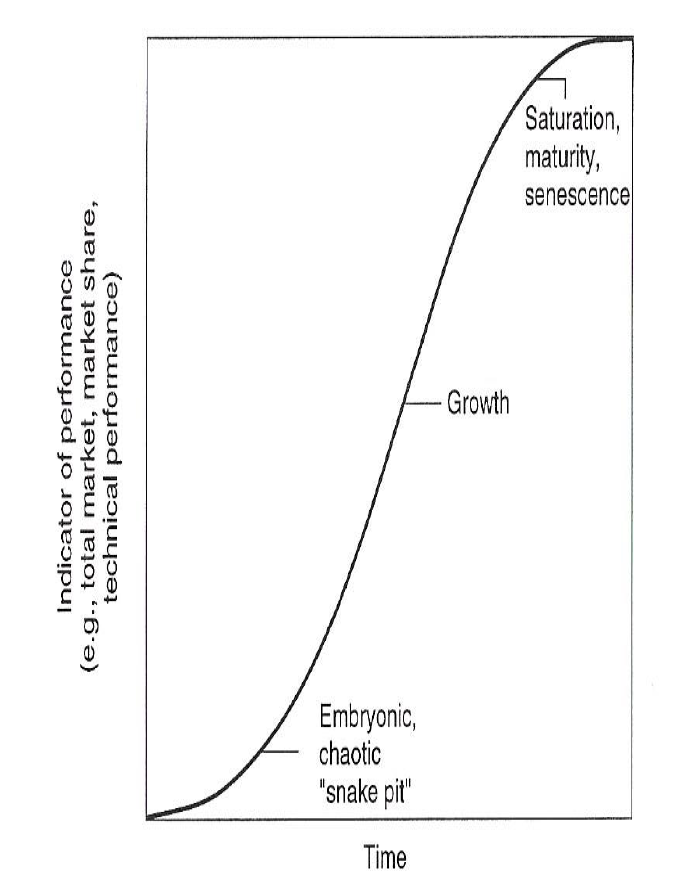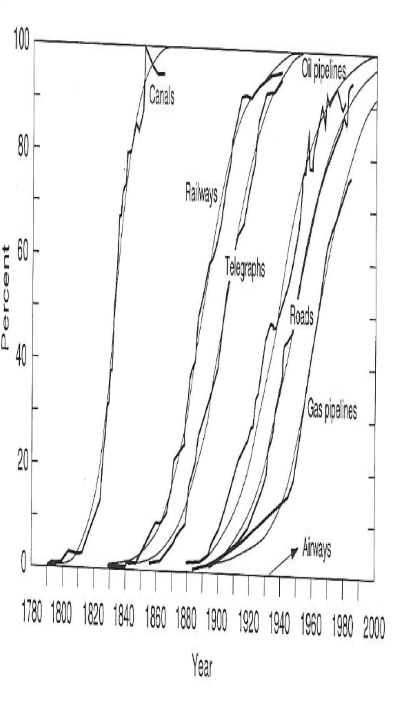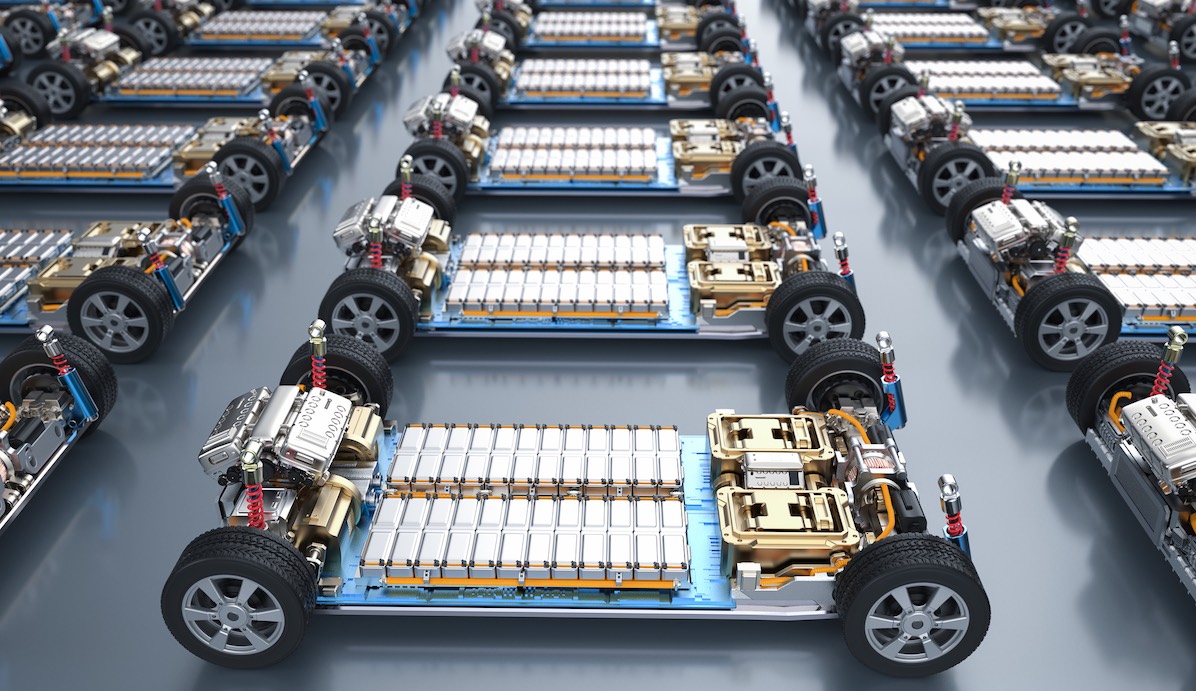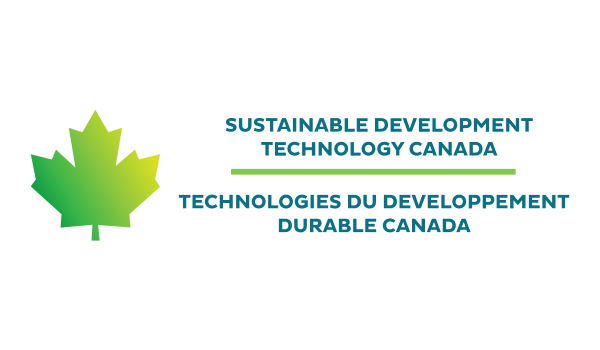Can generative AI technology improve Canada’s economic growth and productivity?
 Peter Josty is Executive Director of the Centre for Innovation Studies in Calgary.
Peter Josty is Executive Director of the Centre for Innovation Studies in Calgary.
There has been a lot of talk about Canada’s poor economic growth and productivity. The OECD puts Canada at the bottom of the G20 in growth for the next few decades. Will adoption of artificial intelligence speed up growth?
When a new technology comes along, its diffusion through the economy typically follows an S-shaped curve (See graph below. Source: Diffusion of Innovations by Everett Rogers, The Free Press). At first, early adopters use the new technology, then others see how well it performs and copy the early adopters and the technology becomes mainstream.

Later on, late adopters start using the technology, until finally the market is saturated and growth ceases. Eventually the technology is replaced by something else.
An S-curve is the stylized version. However, the real world follows the S-curve fairly closely in many cases. The graphic below right (Source: Technology and Global Change by Arnold Grubler, Cambridge University Press) shows examples from the adoption of U.S. infrastructure.
 However, to use generative artificial intelligence (AI) effectively requires a significant amount of technical expertise. It’s worth noting that 27 per cent of businesses in Canada don’t even have a website, so adoption of AI for these businesses will likely be very slow. There is evidence that Canadian firms are very slow at adopting AI.
However, to use generative artificial intelligence (AI) effectively requires a significant amount of technical expertise. It’s worth noting that 27 per cent of businesses in Canada don’t even have a website, so adoption of AI for these businesses will likely be very slow. There is evidence that Canadian firms are very slow at adopting AI.
The timescale is also worth noting. It took about 100 years from the first railway until the market was saturated, so widespread adoption of AI could take longer than we think, although not that long.
Applications for generative AI
The World Economic Forum (WEF) included generative AI in its Top 10 Emerging Technologies of 2023. The WEF lists numerous fields where generative AI can be used. They note that while the technology is still currently focused on producing text, computer programming, and images and sound, generative AI could be applied to a range of purposes, including drug design, architecture and engineering.
Other applications include use in the food industry and the design of everyday objects. In scientific research, generative AI could improve experimental design and create new theories. The technology could increase job satisfaction and self-efficacy, according to a WED report.
A strong case can be made that AI is a “General-Purpose Technology” (GPT). A GPT is a technology, such as the steam engine, electric motor, semiconductor and computer, that becomes pervasive throughout the economy and a major driver of economic growth.
GPT technologies typically evolve through a process of trial and error as users learn how to use them, and they also often involve significant industry re-structuring, according to economic research.
AI hype vs. reality
AI is showing signs of becoming an investment bubble. For instance:
- Nvidia, the dominant manufacturer of AI chips, is now valued at over U.S. $1 trillion and recently had a price/earnings ratio of a very high 105.
- It is almost impossible to pick up a magazine or newspaper without finding an article on AI.
- Pundits are predicting the impact of AI ranging all the way from the end of humanity to a much brighter future.
- It is likely impossible to find any large company that is not evaluating the impact of AI on its business.
Is this a bad thing? Economist William Janeway argued that bubbles are a necessary condition for the innovation economy. His reasoning is that you need a speculative bubble to allow the channeling of massive resources into unproven technologies, which enable transformative changes to the economy.
These resources aim to solve two problems: (1) figuring out how to make it work in a way that is economically useful; and (2) figuring out the business models that allow firms to make money using it.
The impact of AI on the economy could take longer than expected. In what’s known as the “Solow paradox,” Nobel prize winner in economic sciences Robert Solow said, in the early days of computers in 1987, that “the computer age was everywhere except in the productivity statistics.”
Edison invented the lightbulb in the 1870s and began selling electricity in 1881, yet it took until the 1930s for 70 per cent of houses in the U.S. to be electrified.
Most of the applications being proposed for AI at the moment involve cost cutting. That is why the writers and actors in Hollywood went on strike. So, at some point these applications will show up in the productivity statistics, although this may take some time.
Longer term, if AI, as a GPT, behaves true to form it will drive significant growth in the Canadian economy in areas we can’t currently predict. However, if past form is any guide this will take decades.
Of course, other countries are also adopting AI. So if Canadian companies continue to lag in adopting and effectively using AI, Canada’s international rankings on economic growth and productivity are unlikely to change.
R$
| Organizations: | |
| People: | |
| Topics: |
Events For Leaders in
Science, Tech, Innovation, and Policy
Discuss and learn from those in the know at our virtual and in-person events.
See Upcoming Events
You have 0 free articles remaining.
Don't miss out - start your free trial today.
Start your FREE trial Already a member? Log in
By using this website, you agree to our use of cookies. We use cookies to provide you with a great experience and to help our website run effectively in accordance with our Privacy Policy and Terms of Service.




